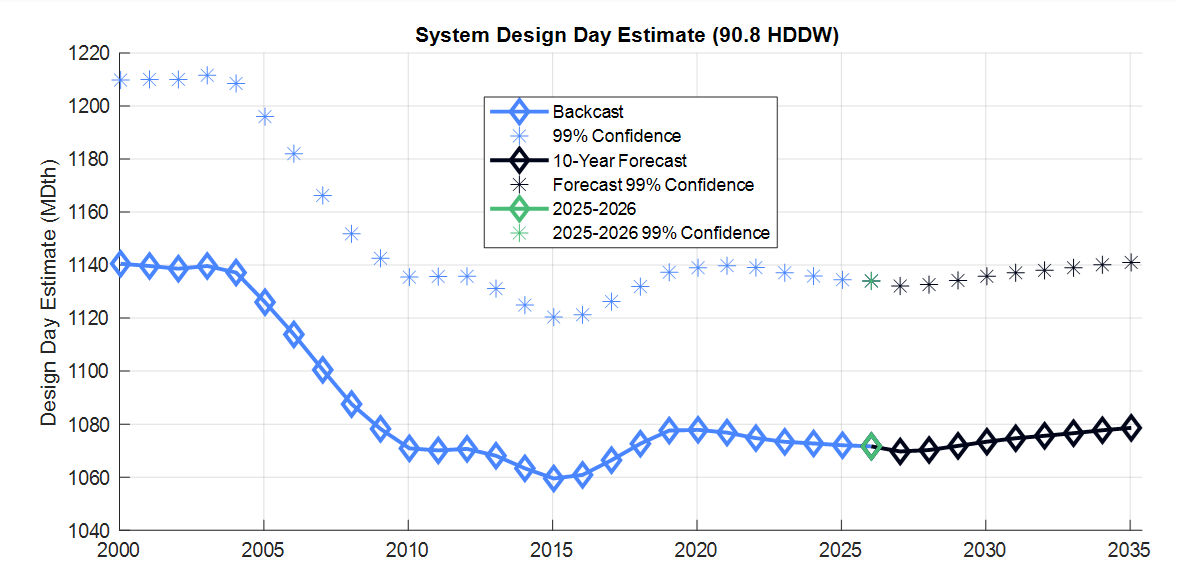March 30, 2020
“Is there any way that you can do an analysis and see if our demand has been affected by the coronavirus?”
“How will the forecast models respond to the changing load on my system due to the coronavirus situation with most staying at home, many commercial and industrial customers shuttered, but some industrial customers in high production?”
We have received many inquiries like these, which fall into two categories that we are investigating:
Is GasDay tracking the change in the load?
What is the change in the load?
To address “Is GasDay tracking the change in the load?” Yes. Our models have two mechanisms built in that will help its forecasts respond to the change in demand due to human behavior and economic response to COVID-19:
Most of our models (all except for no-flow / no-load models) are autoregressive. Recent loads are inputs into the component models. If recent loads are reduced, the load forecasts will also be reduced.
Daily models also have a tuning mechanism designed to track a changing customer base (both heatload and baseload) and respond to those changes over time.
But before we comment on what we see, let’s look at “What is the change in the load?”
Here we want to model the load with models that DO NOT respond to any recent changing load so it will tell us the expected load.
To this end, we are building models without recent past loads as an input (no autoregressive (AR) terms). We train the coefficients of these models with data through 29-Feb-2020. Then, using observed weather, we forecast the loads. The thinking here is these models do not know about any reduction in the load that might have begun starting 1-Mar-2020; thus, the model forecast deviation from actual can be attributed to modeling error and load change.
We have looked at some of the operating areas we forecast. The response below is typical.

The red trace in the actual load. The blue trace is the non-AR modeled load, let’s call it “expected”. The gold trace is the residual (residual = actual – expected).
The model was trained with data through 29-Feb-2020. Look to the right of the vertical gray line at 1-Mar-20. The gold line will be positive if the load is higher than expected and negative if lower than expected. So far this seems inconclusive that the load has changed. But we are keeping an eye on it.
Anecdotally, we have heard and we would expect that commercial load is down but mostly offset by an increase in residential load.
So now back to the “Is GasDay tracking the change in the load?” question. We have looked at the signals used to track the load. Typically, they too are showing that the load has not significantly changed in most of the areas we have investigates. Yet.
An offer to existing GasDay users: We can generate charts like the above in your operating areas. Those using our Web-based products just need to let us know. Those still on GasDay “Classic” (Excel interface) will need to send us their data.
Readers who are not users of our products are welcome to contact us to learn more about how Marquette Energy Analytics might be of help.



